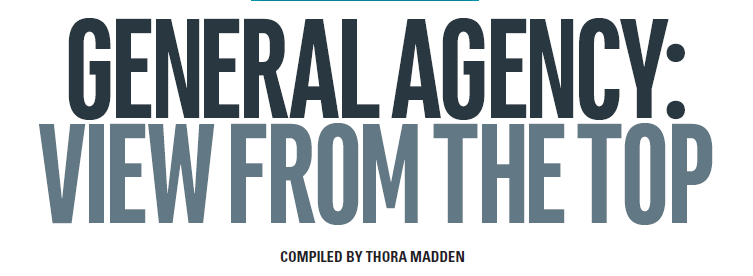
- What are the most important market trends that agents need to be aware of this year in small or large group?
Jennifer Lisanti, Director of Sales, Beere & Purves:
Both segments have been very flat for several years now. As a result, in large group where there is more flexibility, carriers are becoming more aggressive, which is leading to more movement from one carrier to another than we have seen lately.
The biggest change for 2020 is the Department of Managed Health Care (DMHC) ruling requiring fully-insured small businesses to use small group rates and benefits at their next renewal on or after July 2020. There are a lot of small groups that currently get their benefits through large group trusts, etc. that will be forced to move to the small group market. This will be the largest membership increase to the small group market that we have seen in years. This will create a lot of work for agents but also a great opportunity for them to increase their small group book of business.
The DMHC ruling may or may not have an impact on large group, depending how the loss of the small groups in the trusts affect the pool as a whole.
Andre Todd, District General Agent, Colonial Life:
Small employers currently have an increasing issue facing them with the cost of healthcare premiums rising combined with a tight labor market. Small businesses are looking at all options to attract employees, and benefits are one way to remain competitive. A high percentage of employees for both small and large group employers are comparing benefits when making an employment decision. Large employers will likely see an increase of around 5% in the 2020 year for healthcare premiums. However, they still face the struggle of offering newer and more attractive employee benefits. Considering retention when making decisions about what type of benefits to offer will help most employers stay competitive.
Kristine Petrosyan, Vice President of Sales & Operations, Dickerson Employee Benefits:
In small group, we are seeing a trend in which carriers price their products more closely to encourage the purchase of higher-cost products versus lower-cost plans. In the most recent renewal cycle, we saw carriers routinely institute double-digit rate increases for Bronze and some Silver plans, while their increases for Gold and Platinum plans tended to be in the single-digit range. And this occurred despite out-of-pocket (OOP) limits in the Bronze and Silver markets continuing to increase steadily per ACA allowance.
Even as premiums have gone up, we’ve noticed the minimizing of both HMO and PPO networks.
Additionally, legislation continues to impact compliance standards for employers. Being aware of these changes creates opportunities to ensure clients stay ahead of the game and avoid penalties attached to evolving regulations.
Ken Doyle, Senior Vice President of Sales, LISI, an AmWins Group Company:
We’re seeing more market stability; business is spreading back out across the months rather than all in Q4. Larger agencies are investing heavily in technology and acquisitions of brokers/agencies, so gaining market share is on their minds. This year, we’ll see bundled packages, seamless technology offerings, and multi-line product capabilities.
Jessica Word, President, Word & Brown General Agency:
Rates have stabilized in the small group market and we’re seeing single-digit increases from most carriers. This trend helps agents as employers look to control costs, while still offering a competitive benefits structure to employees. We’re also seeing an increase in demand for ancillary options. A multi-carrier study from a few years ago found small- and mid-size market brokers can increase their retention by as much as 10-15% just by bundling health insurance with supplemental products.

- What kinds of General Agent services are most vital to today’s agents and what
should agents keep in mind when choosing a GA?
Lisanti, Beere & Purves:
Similar to last year, the regulatory complexity of our industry, and the increasing demands of clients, mean that it is imperative that brokers work with GAs that are knowledgeable and responsive. A GA needs to make the process as quick and smooth as possible so that the broker can provide high levels of satisfaction to today’s demanding clients. Having a GA partner allows brokers to save time, sell more, better serve their clients, and become more profitable by offloading the work on GAs. When I started in the industry, GAs were strictly a marketing distribution channel for carriers, but now GAs are full service extensions of a broker’s office.
Todd, Colonial Life:
Most GAs are offering a wide range of tools and value-added services to help agents stay competitive and retain current clients. The market has been trending toward communicating benefits through easy-to-use enrollment platforms and integrating with HRIS systems. So agents should be looking for effective ways to communicate their employers benefits – not just through enrollment platforms and communication tools – but also offering those tools to clients with additional ongoing support throughout the year at little or no cost. Statistics have shown that employees who use an online tool still find they need a 1-to-1 consultation to assist them with making benefit decisions. Choosing a GA that integrates an assisted online enrollment tool goes a long way to making sure that both employee and employer are satisfied with the tools being offered.
Petrosyan, Dickerson:
Most GAs now offer basic services including robust quoting systems, renewal and service assistance, and multilingual enrollment and communication. However, in addition to offering a wide variety of carrier products and plans, a GA also needs to offer other services that the advisor needs to present to their client. These value-added products and services include: electronic enrollment, COBRA, HIPAA, and ACA and compliance services. It’s not enough just to represent many insurers and health plans. A GA also needs to partner with Third Party Administrators, Pharmacy Benefit Managers, Network and Quality Care Managers, and Alternative Funding consultants. And most importantly, a GA sales representative should be acting in a consultative capacity and not just as an order taker. A GA should present their carrier partners in an objective and fair manner.

Doyle, LISI:
GA’s should offer a strategic, accountable, and innovative leadership team that’s grounded in integrity and trust, and:
- Industry-leading marketing support
- A full scope of services and resources
- A national reach along with local market knowledge and relationships
- Product lines that offer more than just employee benefits
- Innovative technology solutions
Jessica, Word & Brown:
A competent GA offers service after the sale, like compliance and account management support. It’s also more important than ever for a GA to have the ability to integrate with carriers, online enrollment systems like Ease, and other third-party services. These connections give brokers a seamless, cleaner approach to selling employee benefits.
- What keeps you up at night (i.e. what are the most pressing issues for GAs right now)?
Lisanti, Beere & Purves:
Though ongoing legislative threats do keep me up at night, the same could have been said every year since I began in employee benefits almost 25 years ago. Even though it is the norm, it is important to be aware of the legislative environment and to continue being strong advocates for our industry. The knowledge and customer service agents bring to the complex healthcare world are invaluable to business owners, members and their families.
Todd, Colonial Life:
Human Resources support continues to be an issue for most GAs and their staff. HR personnel continue to feel the pressure of keeping up with the market trends and new laws; and staying relevant and engaged. GAs need to innovate and continue to offer a wide range of services to support their agents and stay above the competition. Since retention is a struggle, offering innovative solutions can be an effective tool in managing client relationships.
Petrosyan, Dickerson:
Declining compensation at a time when we are increasing our services and value proposition to agents is a big concern. Of course, that’s a problem that keeps agents up at night too – we’re both in the same challenging arena. Single Payer has also risen in prominence as a topic of conversation this election cycle, and this is concerning.
Doyle, LISI:
California politicians continue to introduce bills and policies that seemingly result in unintended consequences. There are a handful of folks in Sacramento who believe a single-payer system is the answer. Observing the state’s changing demographics, it’s just a matter of time before we see these changes. At the end of the day, GAs that deliver the same services, with the same mindset will be dinosaurs over the next two years. As GAs, we have to change our approach and our model first, and not expect the legislators to change their approach or way of thinking anytime soon in California.

Jessica, Word & Brown:
I am sure many of us stay up trying to figure out new and creative ways to add value. At Word & Brown we’re investing more than ever to expand our services, not only for our brokers, but also for their customers. For example, while we’re always looking to offer faster ways to quote and enroll for our brokers, we’ve also designed an app for members called MedID. MedID gives members immediate access to their member ID card after their group is approved. Our app eliminates a call to a broker when a member needs to get care, but have not received their ID card from the carrier. This is just one example of our ongoing commitment to developing technology to help brokers and their clients. Finding creative ways to offer more is something we enjoy at Word & Brown.
- Do you have any books you’re reading that you’d like to recommend to California Broker readers? It can be any book of any sort. Just let us know why you like it. (We may mention your pick in our new Cal Broker Reads section of News).
Lisanti, Beere & Purves:
Make It Stick: The Science of Successful Learning by Peter C. Brown
This book discusses the best ways to learn and most importantly, to remember content. It is appealing as a parent with high school aged kids, and for ongoing professional development but it will speak to athletes, life-long learners and mature adults.
Todd, Colonial Life:
My favorite right now is: Who Moved My Cheese by Spencer Johnson, MD.
Petrosyan, Dickerson:
Members on my team recommend reading An American Sickness by Elisabeth Rosenthal, America’s Bitter Pill Money, Politics, Backroom Deals, and the Fight to Fix Our Broken Healthcare System by Steven Brill, and The Manual – Health Care 2020: Connecting the Dots by Greg Dattillo and Dave Racer. These books provide unique insights on the state of the American healthcare system today.
For advice on professional development, team building, and leadership, I recommend reading Five Dysfunctions of a Team by Patrick Lencioni, Traction by Gino Wickman, and Essentialism by Greg McKeown.
Doyle, LISI:
- The E Myth by Michael Gerber
- Start with Why by Simon Sinek
- Think and Grow Rich by Napoleon Hill
- How to Win Friends & Influence People by Dale Carnegie
- Tax-Free Wealth by Tom Wheelwright
- The 10X Rule by Grant Cardone
- Living with a Seal by Jesse Itzler
